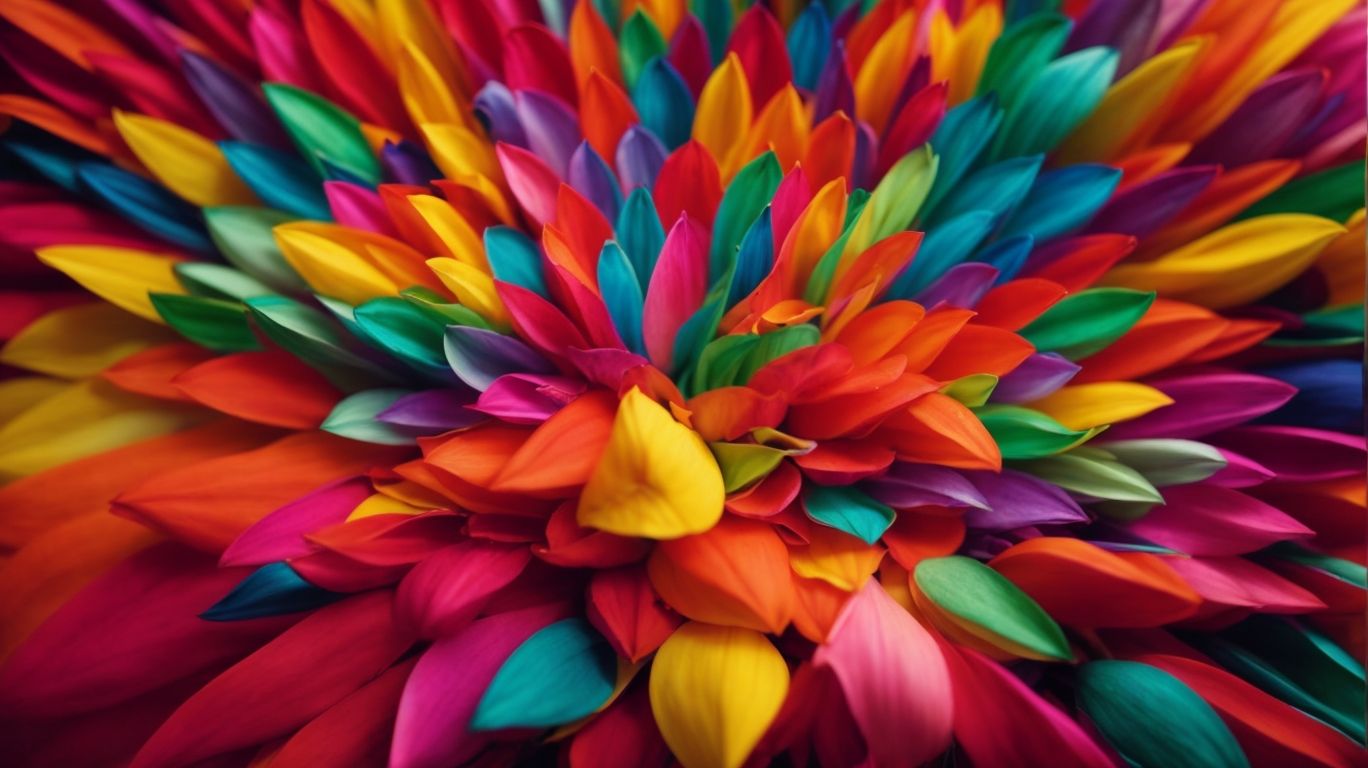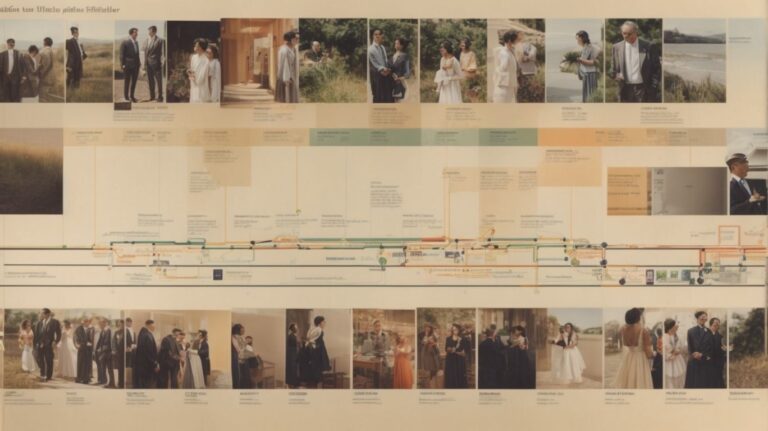Have you ever wondered why certain brands use specific colors in their logos and marketing materials? The answer lies in the fascinating world of color psychology.
This article explores the powerful influence of colors on consumer behavior, decision making, and emotions. We will delve into the meanings behind different colors and how businesses can harness the power of color psychology to enhance their branding, packaging, and marketing strategies.
Join us as we uncover the potential effects of using color psychology in marketing, from increased brand recognition to improved sales and conversions.
Contents
- 1 Key Takeaways:
- 2 What Is Color Psychology?
- 3 How Does Color Psychology Affect Consumer Behavior?
- 4 What Are the Different Colors and Their Meanings?
- 5 How Can Businesses Use Color Psychology in Marketing?
- 6 What Are the Potential Effects of Using Color Psychology in Marketing?
- 7 Frequently Asked Questions
- 7.1 What is color psychology and how does it impact marketing strategies?
- 7.2 What are some common meanings associated with different colors?
- 7.3 How can color psychology be used in branding and advertising?
- 7.4 Are there cultural differences in the impact of color psychology on marketing?
- 7.5 What are some examples of successful use of color psychology in marketing?
- 7.6 How can small businesses use color psychology to stand out in a competitive market?
Key Takeaways:
- Color psychology affects consumer behavior by influencing emotions, perception, and decision making.
- Businesses can utilize color psychology in branding, packaging, and marketing materials for increased brand recognition, sales, and better communication with their target audience.
- Different colors have specific meanings and can evoke different reactions from consumers, making it crucial for businesses to carefully choose the colors they use in their marketing strategies.
What Is Color Psychology?
Color psychology, a significant aspect of marketing and branding, delves into the study of how colors influence consumer behavior, perception, and emotions.
Understanding how color psychology plays a role in consumer behavior is crucial for businesses. It enables them to create strong brand impressions and tailor their marketing strategies accordingly.
Different colors trigger various emotional responses. For example, red may evoke feelings of urgency and excitement, while blue can convey a sense of trust and serenity. In branding, the choice of colors can significantly impact brand recognition and customer loyalty.
By leveraging the principles of color psychology, businesses can establish a deeper connection with their target demographics and influence purchasing decisions.
How Does Color Psychology Affect Consumer Behavior?
Color psychology exerts a profound influence on consumer behavior, shaping their perceptions, emotions, and decision-making processes across various marketing and branding endeavors.
Influence on Emotions
The influence of color psychology on emotions is a pivotal aspect studied extensively to understand how various hues evoke specific emotional responses in consumers.
According to psychological studies, different colors have the ability to trigger distinct emotions.
For instance, red is often associated with excitement and passion, which makes it a common choice in the food and beverage industry to stimulate appetite and impulse. On the other hand, blue is known for its calming effect, frequently utilized by brands to convey trustworthiness and reliability.
Understanding the emotional impact of color is essential for businesses as it can influence consumer behavior, affecting everything from purchasing decisions to brand perception.
By strategically incorporating color into branding and marketing efforts, companies can create a powerful emotional connection with their target audience.
Influence on Perception
Color psychology significantly influences consumer perception by shaping their cognitive interpretations of brands, products, and marketing materials through the strategic use of colors.
The choice of colors in branding and marketing has a profound impact on how consumers connect with a product or a brand. For example, red is often associated with energy and excitement, which can make it an effective choice for brands targeting a youthful audience.
On the other hand, blue is often linked to trust and reliability, making it a popular choice for financial institutions and tech companies. Colors can evoke cultural and emotional responses, influencing purchasing decisions.
Understanding the nuances of color psychology can help businesses leverage it to create a compelling brand experience for consumers.
Influence on Decision Making
Color psychology plays a crucial role in influencing consumer decision-making processes, affecting their responses to advertising, campaigns, and product choices through color-associated preferences and associations.
Consumers’ perceptions of color are deeply ingrained and can subconsciously sway their thoughts and actions. For instance, bright and vibrant colors may evoke feelings of excitement and positivity, which may be advantageous for brands targeting a youthful demographic.
Conversely, muted and calming hues might trigger a sense of tranquility and relaxation, appealing to those seeking a soothing and gentle experience.
These intricate color-related nuances often prompt businesses to conduct extensive A/B testing to pinpoint the most effective color schemes for their websites, advertisements, and product packaging.
Notably, different cultures also attribute varying meanings to colors, influencing diverse global consumer bases in distinct ways.
What Are the Different Colors and Their Meanings?
Understanding the meanings associated with different colors is essential in comprehending their psychological impact on consumer behavior and cultural preferences.
For instance, the color red is often linked to strong emotions like love, passion, and power. In contrast, blue tends to evoke feelings of calmness, trust, and security.
The cultural significance of colors varies globally, with each color holding different symbolism across different regions and traditions.
For example, while white represents purity and peace in Western cultures, it can signify mourning in some Asian societies. These nuanced connections between colors and emotions have a profound influence on consumer choices and brand perceptions.
Red
The color red carries diverse connotations, symbolizing passion, energy, and urgency, with significant implications for consumer behavior and emotional responses in marketing and branding contexts.
In the realm of psychology, the color red has been linked to stimulating and attention-grabbing effects on human emotions. It is known to evoke strong feelings of excitement, power, and even danger, triggering physiological reactions such as increased heart rate and heightened blood pressure.
These associations extend to consumer behavior, where red is often utilized to create a sense of urgency and impulse, driving sales and influencing purchasing decisions.
Across different cultures, red holds diverse symbolism, representing luck, prosperity, and love in some societies, while denoting warning and danger in others. This versatility makes red a compelling and complex color with deep psychological and cultural influences.
Blue
The color blue represents tranquility, trust, and professionalism, influencing consumer emotions and perceptions in marketing, branding, and product design endeavors.
Blue holds a powerful psychological significance, evoking feelings of calmness and serenity in individuals. It is often associated with stability, reliability, and dependability, making it a popular choice for corporate branding and professional settings.
In marketing, the use of blue can convey a sense of security and trust, influencing consumer behavior and purchase decisions. Additionally, blue is deeply connected to cultural meanings.
Across various societies, it symbolizes different emotions, ranging from sadness to spirituality. In some cultures, it represents wisdom and intelligence, while in others, it is linked to healing and meditation.
Yellow
The color yellow evokes feelings of optimism, warmth, and creativity, playing a pivotal role in influencing consumer emotions and perceptions across various marketing and branding platforms.
When individuals encounter yellow, it often triggers associations with sunshine, happiness, and energy. Psychologically, it is linked to stimulating mental activity, enhancing concentration, and promoting positivity.
In consumer behavior, yellow is frequently utilized to grab attention, create a sense of urgency, and convey a lively and cheerful brand image.
Culturally, different regions attribute varying significance to yellow, such as happiness in Western cultures, prosperity in Eastern cultures, and caution in safety warnings and road signs.
The versatile emotional impact of yellow makes it a popular choice in marketing and design strategies.
Green
The color green signifies nature, growth, and harmony, influencing consumer emotions and perceptions in marketing, branding, and product experiences through its psychological associations.
Green is often associated with feelings of tranquility, balance, and renewal, making it a popular choice for brands aiming to convey a sense of eco-friendliness, sustainability, and wellness.
It can evoke a sense of freshness, calmness, and vitality, influencing consumer purchasing decisions and behavior. Green holds cultural significance in various societies, representing luck, fertility, and prosperity in some regions, while symbolizing environmental awareness and progress in others.
Purple
The color purple symbolizes luxury, creativity, and royalty, creating distinct emotional and perceptual impacts on consumers in marketing and branding initiatives.
Psychologically, purple is associated with introspection and self-awareness, inspiring a sense of creativity and imagination. It is often linked to the workings of the mind and the emotions, making it a powerful tool in evoking deep feelings and stimulating artistic endeavors.
In consumer behavior, the color purple can represent a sense of opulence and sophistication, making it attractive to those seeking a luxurious experience.
Brands often use purple in their logos and packaging to convey a sense of exclusivity and elegance, playing into the subconscious associations with wealth and high quality.
Culturally, purple has been historically tied to royalty and spirituality. In many societies, it represents regal power and authority, and is often used in ceremonial clothing and regalia for this reason, imparting a sense of grandeur and importance.
Orange
The color orange conveys warmth, enthusiasm, and energy, influencing consumer emotions and perceptions in marketing, branding, and design to evoke specific psychological responses.
Orange is often associated with feelings of excitement, creativity, and encouragement. It stimulates joy and represents vitality, making it a powerful tool in influencing consumer behavior.
In branding, the use of orange can create a sense of urgency and impulse, often seen in sale promotions or limited-time offers. It is linked to social interaction and conversation, making it an ideal choice for social platforms, where engagement and interactions are key.
Black
The color black embodies sophistication, power, and elegance, influencing consumer emotions and perceptions in marketing, branding, and design to evoke specific psychological responses.
Black is often associated with authority and mystery. This leads to a sense of seriousness and depth. It can also evoke feelings of protection and comfort, making it a popular choice in fashion and interior design.
However, excessive use of black can be overwhelming and evoke feelings of sadness or negativity. In marketing, black is often used to convey a sense of luxury and sophistication. This can impact consumer behavior by creating a perception of exclusivity and high quality.
In different cultures, black may represent mourning or formality. In some contexts, it can also symbolize rebellion or strength.
White
The color white symbolizes purity, simplicity, and cleanliness, influencing consumer emotions and perceptions in marketing, branding, and design to evoke specific psychological responses.
When used in marketing, the color white is often associated with a sense of purity and sterility, which can influence consumer behavior and purchasing decisions.
It is commonly employed in the branding of products and services in the healthcare, beauty, and technology industries to convey a sense of cleanliness and sophistication.
White also holds cultural significance in many societies, representing purity and new beginnings in weddings and religious ceremonies.
This cultural association can influence consumer perceptions and preferences, making white a popular choice for products related to weddings, celebrations, and spiritual practices.
How Can Businesses Use Color Psychology in Marketing?
Businesses can harness the power of color psychology in marketing through strategic branding, logo design, product packaging, and targeted advertising campaigns to influence consumer perceptions and behaviors effectively.
Colors evoke emotions and associations, making them a potent tool for businesses to communicate their brand’s message.
For instance, red signifies energy and passion, often used by food or beverage brands to stimulate appetite. On the other hand, blue conveys trust and reliability, commonly employed by technology or finance companies.
By understanding the psychological impact of colors, businesses can craft visually appealing logos that resonate with their target audience and create memorable brand identities.
Branding and Logo Design
The strategic use of color psychology in branding and logo design enables businesses to create distinct brand identities and evoke targeted emotional responses from their audience.
By understanding the psychological impact of colors, companies can tailor their visual representations to reflect the desired attributes and resonate with their customer base.
This helps in effectively communicating the brand’s message and values. For example, warm tones like red and orange can convey energy, excitement, and passion, while cooler shades such as blue and green are often associated with trust, stability, and nature.
This understanding also guides the selection of color palettes and the design of brand logos, ensuring that colors evoke the intended feelings and associations in the minds of consumers. This is important as colors play a significant role in creating emotional connections with a brand and influencing consumer behavior.
Product Packaging
Product packaging leverages color psychology to capture consumer attention, convey brand messaging, and influence purchasing decisions through visually enticing and emotionally resonant designs.
The strategic use of colors on product packaging serves as a powerful tool in influencing consumer perceptions and behaviors. For instance, warm colors like red and orange can evoke feelings of excitement and energy, making them ideal for products targeting a youthful audience.
Conversely, cool tones such as blue and green are often associated with calmness and trust, appealing to consumers seeking relaxation or seeking dependable products.
In addition, color contrasts and combinations can draw attention to specific product features or communicate its unique selling points.
For example, vibrant contrasts can create a sense of urgency, encouraging impulse purchases, while harmonious blends can convey sophistication and elegance, influencing consumers’ perceptions of the product’s value.
Advertising and Marketing Materials
Color psychology in advertising and marketing materials influences consumer responses, engagement, and brand recall, shaping the success of campaigns and communication strategies.
Through the deliberate use of color, marketers can evoke specific emotions and associations in their target audience.
Warm hues like red and orange can stimulate excitement and urgency, whereas cool tones such as blue and green often convey calmness and trust. These psychological cues can subconsciously sway consumer decisions and reinforce brand identity.
Furthermore, color variations can be utilized to differentiate products, evoke cultural symbolism, or signify specific attributes, further leveraging their influence on consumer behavior.
What Are the Potential Effects of Using Color Psychology in Marketing?
Leveraging color psychology in marketing can yield diverse effects, including increased brand recognition, improved sales and conversions, enhanced brand perception, and better communication with the target audience.
Colors can evoke specific emotions and associations, influencing consumer behavior in powerful ways.
For example, red can create a sense of urgency and excitement, which might prompt impulse purchases, while blue often conveys trust and reliability, making it suitable for financial institutions and tech companies.
Color schemes can strengthen a brand’s identity, making it more memorable for consumers. Understanding the psychological impact of colors enables marketers to craft compelling campaigns tailored to their audience’s preferences and sensibilities.
Increased Brand Recognition
The strategic application of color psychology contributes to increased brand recognition, enabling businesses to establish memorable and distinct visual identities that resonate with their audience.
Color psychology, the study of how colors impact human emotions and behavior, plays a pivotal role in shaping a brand’s image. Businesses strategically leverage color psychology to evoke specific emotions and associations, creating a lasting imprint in consumers’ minds.
Color choices in branding influence consumer perceptions, evoke certain feelings, and trigger brand recall. For example, warm hues like red and orange often convey energy and passion, while cool tones like blue and green evoke a sense of calm and trust.
Improved Sales and Conversions
Effective use of color psychology in marketing contributes to improved sales and conversions by influencing consumer perceptions, purchase behavior, and brand preferences through visually compelling and emotionally resonant designs.
This psychological phenomenon taps into the deep-rooted associations and emotions tied to specific colors, which in turn shape consumer decision-making processes.
For instance, the color blue often evokes feelings of trust and professionalism, making it a popular choice for finance and technology brands aiming to establish credibility. On the other hand, vibrant red hues may elicit excitement and urgency, prompting impulse purchases in retail settings.
By strategically integrating these color associations into branding, packaging, and marketing materials, businesses can impact customer attitudes and ultimately drive sales.
Enhanced Brand Perception
Color psychology contributes to enhanced brand perception, enabling businesses to shape consumer attitudes, associations, and emotional connections with their brand through the strategic use of colors in marketing and branding materials.
When considering the impact of color psychology on brand perception, it’s important to recognize the profound influence that color can have on individuals’ emotions and behavior.
For instance, warm hues like red and orange are often associated with energy, passion, and urgency, evoking a sense of excitement and impulsiveness. On the other hand, cool tones such as blue and green are often linked to calmness, trustworthiness, and nature, eliciting feelings of serenity and stability.
Better Communication with Target Audience
The strategic application of color psychology facilitates better communication with the target audience, enabling businesses to convey brand messaging, evoke emotional responses, and build stronger connections with consumers through color-associated preferences and associations.
Color psychology plays a crucial role in influencing consumer behavior and perception. By understanding the psychological effects of different colors, businesses can tailor their branding and marketing strategies to create specific emotional reactions and connections.
For example, warm colors like red and orange can evoke excitement and passion, while cool colors like blue and green often convey calmness and trust.
The cultural and personal associations with colors greatly impact how individuals interpret and respond to brand communications. By incorporating appropriate colors, businesses can effectively resonate with diverse audiences and convey meaningful messages that resonate at an emotional level.
Frequently Asked Questions
What is color psychology and how does it impact marketing strategies?
Color psychology is the study of how colors affect human behavior and emotions. In marketing, this knowledge is applied to influence consumer perceptions and decision-making. Color can evoke certain emotions and associations, making it a powerful tool in advertising and branding.
What are some common meanings associated with different colors?
Different colors have different meanings and associations. For example, red is often associated with excitement and passion, while green is associated with nature and health. It’s important for marketers to understand these meanings and use them strategically to convey the desired message to their target audience.
How can color psychology be used in branding and advertising?
Color psychology can be used in branding and advertising in many ways. For example, a brand can use a specific color in its logo to create a certain image or impression in consumers’ minds. Advertisements can also use colors to evoke specific emotions and create a connection with the audience.
Are there cultural differences in the impact of color psychology on marketing?
Yes, there can be cultural differences in the impact of color psychology on marketing. Different cultures may associate different meanings with certain colors, so it’s important for marketers to consider these cultural differences when developing their strategies and campaigns.
What are some examples of successful use of color psychology in marketing?
One famous example is Coca-Cola’s use of red in their branding, which is associated with excitement, energy, and passion. Another example is the use of green by Whole Foods, which aligns with their brand identity of promoting health and sustainability.
How can small businesses use color psychology to stand out in a competitive market?
Small businesses can use color psychology to differentiate themselves from competitors and create a unique brand identity. By understanding the meanings and associations of different colors, they can choose a color that resonates with their target audience and helps them stand out in a crowded market.





